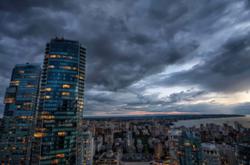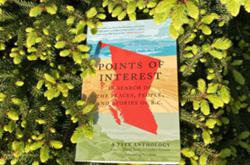[Editor's note: Earlier this year, a special team of Tyee Solutions Society reporters had the chance to spend some time on B.C.'s Central Coast. Follow their reports through this special series.]
Fish traps turn up practically everywhere you find andromous fish—such as salmon and herring—that migrate from the sea to spawn in rivers or close to shore, or where their opposites, catadromous fish like eels swim from lakes and rivers to spawn at sea. The Thames River's medieval fish weirs, the Maori people's eel weirs in New Zealand, the Amazon's ancient 500-square-kilometre weir in Baures, the Passaic River's pre-Colombian weirs in heavily urbanized New Jersey, various European weirs dating to 8,000 years ago: all display a similar ingenuity for gathering similar dinners at little effort.
The Pacific Coast of North America is no different. How the traps were used depended on the fish, the materials available, the broader environment and the human culture. But from California to Alaska, fish traps lined the ocean shores for thousands of years, and their remains are easy to find—provided you know what to look for and understand that the technology was probably highly adaptive to local materials and conditions.
The people of the Northwest Coast domesticated their landscape intensively. In Tla'amin territory, for example, archaeologists have found stone fish traps interspersed with clam gardens. Just as gardeners of domesticated plants cater to their mini-ecosystems, moving around whatever is growing poorly—blueberry bushes, peonies—until they find the spot where the plant thrives, so ancient peoples must have moved and modified their fish traps until they found the sweet spot. The more experience you have with the land or water, the better your garden... or your harvest of seafood.
Topics: Environment, Food ![]()
Read more: Indigenous, Environment
















Tyee Commenting Guidelines
Comments that violate guidelines risk being deleted, and violations may result in a temporary or permanent user ban. Maintain the spirit of good conversation to stay in the discussion.
*Please note The Tyee is not a forum for spreading misinformation about COVID-19, denying its existence or minimizing its risk to public health.
Do:
Do not: